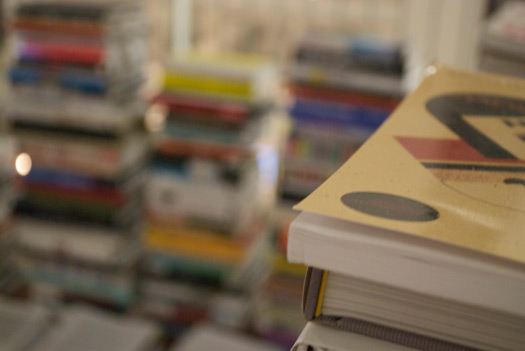
Photo by Malcolm Drenttel
For this holiday season, Design Observer's contributing writers offer some recommendations for gifts and personal reading.
Michael Bierut recommends:
Jonathan Safran Foer
Visual Editions, 2010
Jonathan Safran Foer, who brought an inventive visual approach to storytelling in his novel Extremely Loud and Incredibly Close, takes it way beyond the next level with this extraordinary book. Using a different pattern of die-cuts on every page, Foer transforms an existing book, Bruno Schulz's The Street of Crocodiles, into an entirely different one. There's nothing new about multilayered narratives, of course, but using production techniques this ambitious takes a literary metaphor and creates an object of unprecedented complexity and beauty.
Visual Editions, 2010
Jonathan Safran Foer, who brought an inventive visual approach to storytelling in his novel Extremely Loud and Incredibly Close, takes it way beyond the next level with this extraordinary book. Using a different pattern of die-cuts on every page, Foer transforms an existing book, Bruno Schulz's The Street of Crocodiles, into an entirely different one. There's nothing new about multilayered narratives, of course, but using production techniques this ambitious takes a literary metaphor and creates an object of unprecedented complexity and beauty.
Simon Garfield
Profile Books, 2010
f you already know everything there is to know about about type, this is the book for you. If you have a loved one who doesn't understand why anyone should give a damn about type, this is the book for them. To write a single volume capable of entertaining the initiated and initiating the unaware is an amazing achievement and Simon Garfield has pulled it off. Garfield, an accomplished journalist who managed a similar feat in 2002 with Mauve: How One Man Invented a Color that Changed the World, is well read and readable and may be the ambassador the graphic design profession has long awaited.
Profile Books, 2010
f you already know everything there is to know about about type, this is the book for you. If you have a loved one who doesn't understand why anyone should give a damn about type, this is the book for them. To write a single volume capable of entertaining the initiated and initiating the unaware is an amazing achievement and Simon Garfield has pulled it off. Garfield, an accomplished journalist who managed a similar feat in 2002 with Mauve: How One Man Invented a Color that Changed the World, is well read and readable and may be the ambassador the graphic design profession has long awaited.
Stephen Sondheim
Knopf, 2010
If you want to be convinced that Stephen Sondheim is America's greatest living artist in any medium, this generous book will provide all the evidence you need. The lyrics of his greatest shows, including West Side Story, Company, Follies and Sweeney Todd are remarkable for their wit and precision. Better still, however, is the running commentary he provides on his idols and rivals, stars and collaborators and above all, the pleasure and pain of the creative process iteself.
Knopf, 2010
If you want to be convinced that Stephen Sondheim is America's greatest living artist in any medium, this generous book will provide all the evidence you need. The lyrics of his greatest shows, including West Side Story, Company, Follies and Sweeney Todd are remarkable for their wit and precision. Better still, however, is the running commentary he provides on his idols and rivals, stars and collaborators and above all, the pleasure and pain of the creative process iteself.
Jade-Snow Carroll recommends:
Steve Heller & Elaine Lustig Cohen
Chronicle Books, 2010
Alvin Lustig's long anticipated monograph has arrived and I am happy to report, was well worth the wait. Beautifully designed by Tamar Cohen and lovingly authored by Steve Heller and Elaine Lustig Cohen, the book spans the prolific career of this modern man, full of images, drawings and his famous book covers, an intimate portrait of an important designer.
Chronicle Books, 2010
Alvin Lustig's long anticipated monograph has arrived and I am happy to report, was well worth the wait. Beautifully designed by Tamar Cohen and lovingly authored by Steve Heller and Elaine Lustig Cohen, the book spans the prolific career of this modern man, full of images, drawings and his famous book covers, an intimate portrait of an important designer.
Cees De Jong, editor
Taschen, 2009
A great reference. Culled from Dutch collector Jan Tholenaar's private collection, Vol. 1 gives examples of typography, ornamentation and various uses of the letter form, ranging from 1628 through 1900. Features the work of typographers William Caslon, Eric Gill, Jan Tschichold, A. M. Cassandre, Adrian Frutiger and others.
Taschen, 2009
A great reference. Culled from Dutch collector Jan Tholenaar's private collection, Vol. 1 gives examples of typography, ornamentation and various uses of the letter form, ranging from 1628 through 1900. Features the work of typographers William Caslon, Eric Gill, Jan Tschichold, A. M. Cassandre, Adrian Frutiger and others.
Cees De Jong
Taschen, 2010
Also from Jan Tholenaar's vast collection, Vol. 2 expands through 1901-1938. Each volume includes a keycard to an online image library where 1400 high-res scans are available for unrestricted use. These two books are a valuable addition to any designers toolbox.
Taschen, 2010
Also from Jan Tholenaar's vast collection, Vol. 2 expands through 1901-1938. Each volume includes a keycard to an online image library where 1400 high-res scans are available for unrestricted use. These two books are a valuable addition to any designers toolbox.
William Drenttel recommends:
Giacomo Leopardi
Farrar, Straus and Giroux, 2010
For those of us who prefer the darker sides of literature, this is a large body of work of great importance. I keep reading and reading, and then re-reading. The translations by Jonathan Galassi are precise and the poems are moving.
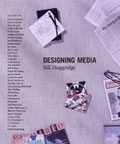
Farrar, Straus and Giroux, 2010
For those of us who prefer the darker sides of literature, this is a large body of work of great importance. I keep reading and reading, and then re-reading. The translations by Jonathan Galassi are precise and the poems are moving.

Bill Moggridge
MIT Press, 2010
On the surface, just another anthology of interviews. But the interviews are so good! And the range of voices so rich! I'm an unwilling fan of this book. Bill Moggridge moves the questions way beyond normal discussions about "media."
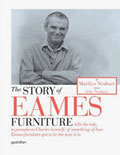
MIT Press, 2010
On the surface, just another anthology of interviews. But the interviews are so good! And the range of voices so rich! I'm an unwilling fan of this book. Bill Moggridge moves the questions way beyond normal discussions about "media."

Marilyn & John Neuhart
Gestalten, 2010
Unbelievable homage to the most famous of design couples. Two volumes — as large and heavy as books come. Many surprises. Stay tuned for a full review by Alexandra Lange in the months to come.
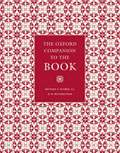
Gestalten, 2010
Unbelievable homage to the most famous of design couples. Two volumes — as large and heavy as books come. Many surprises. Stay tuned for a full review by Alexandra Lange in the months to come.

Michael Suarez & H. R. Woudhuysen, editors
Oxford University Press, 2010
This two-volume set is an important addition to the history of the book: entries range from the arcane (Missionary Printing) to the current (Electronic Book). Nonetheless, it reads throughout like history written in the 21st century. Thank god. This is one of those multi-volume tomes I'm glad to have in my library.
Oxford University Press, 2010
This two-volume set is an important addition to the history of the book: entries range from the arcane (Missionary Printing) to the current (Electronic Book). Nonetheless, it reads throughout like history written in the 21st century. Thank god. This is one of those multi-volume tomes I'm glad to have in my library.
Michael Erard recommends:
Deborah Fallows
Walker & Company, 2010
Three years living in China with her journalist husband, James Fallows, produces this charming account of the language and the country, organized in easy-to-read chapters around single language topics, wrapped in the guise of a foreign language-learning memoir.
Walker & Company, 2010
Three years living in China with her journalist husband, James Fallows, produces this charming account of the language and the country, organized in easy-to-read chapters around single language topics, wrapped in the guise of a foreign language-learning memoir.
David Mitchell
Random House, 2010
Mitchell's flawless textual architectures are underappreciated, I think: this is a book whose sentences are as deliberate as the narrative, all of which serves the resonance of single haiku-like moments and the unfolding of human relationships. This consistency that replaces the formal loop-de-loops of early books is harder to do and more thrilling.
Random House, 2010
Mitchell's flawless textual architectures are underappreciated, I think: this is a book whose sentences are as deliberate as the narrative, all of which serves the resonance of single haiku-like moments and the unfolding of human relationships. This consistency that replaces the formal loop-de-loops of early books is harder to do and more thrilling.
William Davies King
University Of Chicago Press, 2009
This excruciatingly honest and painful autobiographical account of one man's life as an obsessed collector of "nothing" (food labels, envelopes, etc.) is like a wine tasting with Hannibal Lecter — maybe this is all just honey he's using to collect you, the reader. [An excerpt of this book previously appeared on Design Observer. Read here.]
University Of Chicago Press, 2009
This excruciatingly honest and painful autobiographical account of one man's life as an obsessed collector of "nothing" (food labels, envelopes, etc.) is like a wine tasting with Hannibal Lecter — maybe this is all just honey he's using to collect you, the reader. [An excerpt of this book previously appeared on Design Observer. Read here.]
John Foster recommends:
Malcolm Daniel
Metropolitan Museum of Art, 2010
Here’s a sumptuous book to accompany the Met’s exhibition of three giants in 20th century photography, images drawn entirely from the museum’s collection of works by Alfred Stieglitz (1864-1946), Edward Steichen (1879-1973) and Paul Strand (1890-1976). See through these rare “crown jewels of the collection” how photography emerged from Pictorialism to embrace such radical modernist ideas such as candid street photography, abstraction and movement.
Metropolitan Museum of Art, 2010
Here’s a sumptuous book to accompany the Met’s exhibition of three giants in 20th century photography, images drawn entirely from the museum’s collection of works by Alfred Stieglitz (1864-1946), Edward Steichen (1879-1973) and Paul Strand (1890-1976). See through these rare “crown jewels of the collection” how photography emerged from Pictorialism to embrace such radical modernist ideas such as candid street photography, abstraction and movement.
Miroslav Tichý
Steidl, 2010
Obsession is not always a good thing, but for Czech artist/photographer Miroslav Tichý it has brought him fame — even if late in life and even if he did not want it. Using handmade cameras made from toilet paper tubes, cardboard, spools and other found materials, Tichý has devoted years to secretly photographing female passersby. The images are raw, scratched, distorted and imperfect — which is part of their magical charm. In a world where flawless technique usually prevails, Tichý’s photos reflect his often-troubled psyche, where visages of women are collected like fireflies in a jar.
Steidl, 2010
Obsession is not always a good thing, but for Czech artist/photographer Miroslav Tichý it has brought him fame — even if late in life and even if he did not want it. Using handmade cameras made from toilet paper tubes, cardboard, spools and other found materials, Tichý has devoted years to secretly photographing female passersby. The images are raw, scratched, distorted and imperfect — which is part of their magical charm. In a world where flawless technique usually prevails, Tichý’s photos reflect his often-troubled psyche, where visages of women are collected like fireflies in a jar.
Cynthia Young
Steidl, 2010
For decades, photography experts, curators and historians had heard rumors that the legendary war photographer Robert Capa’s Spanish Civil War negatives might actually exist. The suitcase, having disappeared from Capa’s Paris studio at the onset of WWII, finally surfaced just three years ago and are presented for you in a handsome, two-volume set. The added bonus of these volumes is the marvelous design by Martin Venezky and his Appetite Engineers studio. Book accompanied the exhibition at ICP.
Steidl, 2010
For decades, photography experts, curators and historians had heard rumors that the legendary war photographer Robert Capa’s Spanish Civil War negatives might actually exist. The suitcase, having disappeared from Capa’s Paris studio at the onset of WWII, finally surfaced just three years ago and are presented for you in a handsome, two-volume set. The added bonus of these volumes is the marvelous design by Martin Venezky and his Appetite Engineers studio. Book accompanied the exhibition at ICP.
Jessica Helfand recommends:
Matthew Bakkom, editor
Steidl, 2009
Before blogs and tweets and digital petitions, the letter was the primary vehicle for voicing dissatisfaction. This book features some 132 letters written to the Mayor of New York between 1751 and 1969, which chronicle, both individually and collectively, the kinds of absurd problems that faced metropolitain dwellers in an earlier, arguably cell phone and email-free time. This beautiful book offers up a side of material culture not frequently seen — or imagined — and obliges us to reconsider the lost art of letter-writing in a new and unusual way.
Steidl, 2009
Before blogs and tweets and digital petitions, the letter was the primary vehicle for voicing dissatisfaction. This book features some 132 letters written to the Mayor of New York between 1751 and 1969, which chronicle, both individually and collectively, the kinds of absurd problems that faced metropolitain dwellers in an earlier, arguably cell phone and email-free time. This beautiful book offers up a side of material culture not frequently seen — or imagined — and obliges us to reconsider the lost art of letter-writing in a new and unusual way.
Bill Keaggy
How Books, 2010
A curious lens through which we see peoples’ spending habits, food allergies and idiosyncratic tendencies, and a celebration of the non-sequitor if ever there was one. Funny lists, sad lists, unhealthy lists, old peoples’ lists — you name it, it’s here. But it isn’t so much the lists themselves (okay, sometimes it is) as the author’s dry commentary that will keep you riveted. You’ll never look at a shopping list the same way again.
How Books, 2010
A curious lens through which we see peoples’ spending habits, food allergies and idiosyncratic tendencies, and a celebration of the non-sequitor if ever there was one. Funny lists, sad lists, unhealthy lists, old peoples’ lists — you name it, it’s here. But it isn’t so much the lists themselves (okay, sometimes it is) as the author’s dry commentary that will keep you riveted. You’ll never look at a shopping list the same way again.
Susie Linfield
University of Chicago, 2010
Brilliantly crafted, exquisitely written and exceptionally powerful in its argument, Susie Linfield looks at our complex relationship with what are essentially disquieting images: pictures of war, of violence, of unthinkable terror. Linfield debates theorists and critics from Charles Baudelaire to Walter Benjamin and fearlessly takes issue with Susan Sontag whose seminal 1977 book On Photography is reconsidered with fascinating new insight.
University of Chicago, 2010
Brilliantly crafted, exquisitely written and exceptionally powerful in its argument, Susie Linfield looks at our complex relationship with what are essentially disquieting images: pictures of war, of violence, of unthinkable terror. Linfield debates theorists and critics from Charles Baudelaire to Walter Benjamin and fearlessly takes issue with Susan Sontag whose seminal 1977 book On Photography is reconsidered with fascinating new insight.
Alexandra Lange recommends:
Amale Andraos & Dan Wood
Princeton Architectural Press, 2010
TA small book describing WORK Architecture Company's 2008 P.S.1 project, Public Farm 1. The story it tells about making a tiny working farm in the museum courtyard is as interesting as the way it is told, via oral history.
Princeton Architectural Press, 2010
TA small book describing WORK Architecture Company's 2008 P.S.1 project, Public Farm 1. The story it tells about making a tiny working farm in the museum courtyard is as interesting as the way it is told, via oral history.
Nancy Carlisle & Melinda Talbot Nasardinov
Historic New England, 2008
A detailed visual history that covers everything from the Hoosier cabinet (an amazing space-saver from the turn of the last century) to the hygienic surfaces of the 1960s dream house. Lovely vintage images, and brief thoughtful accounts of how and where we have cooked.
Historic New England, 2008
A detailed visual history that covers everything from the Hoosier cabinet (an amazing space-saver from the turn of the last century) to the hygienic surfaces of the 1960s dream house. Lovely vintage images, and brief thoughtful accounts of how and where we have cooked.
Mary & Russel Wright
Gibbs Smith, 2003
The industrial designers' 1950 guide describes a modern home that liberates women from formal entertaining and families from high-maintenance routine. Their idea of easier living still resonates, and their detailed home prescriptions (buffet suppers, portable seating, double-duty storage) are still useful, rendered in charming drawings.
Gibbs Smith, 2003
The industrial designers' 1950 guide describes a modern home that liberates women from formal entertaining and families from high-maintenance routine. Their idea of easier living still resonates, and their detailed home prescriptions (buffet suppers, portable seating, double-duty storage) are still useful, rendered in charming drawings.
Julie Lasky recommends:
Hilary Mantel
Henry Holt, 2009
Last year’s Man Booker prizewinner is a gorgeously rendered tapestry of an exhaustively fictionalized subject: those lusty Tudors. As Henry VIII courts Anne Boleyn against the backdrop of the Holy Roman Empire, saintly Thomas More is presented as an ascetic crabapple and Thomas Cromwell — a villain in how many Hollywood renditions? — captures our hearts. We’ve been endlessly told the end of the story (enter axe), and yet this novel remains a page-turner.
Henry Holt, 2009
Last year’s Man Booker prizewinner is a gorgeously rendered tapestry of an exhaustively fictionalized subject: those lusty Tudors. As Henry VIII courts Anne Boleyn against the backdrop of the Holy Roman Empire, saintly Thomas More is presented as an ascetic crabapple and Thomas Cromwell — a villain in how many Hollywood renditions? — captures our hearts. We’ve been endlessly told the end of the story (enter axe), and yet this novel remains a page-turner.
Bill McKibben
Times Books, 2010
As concerned observers of environmental degradation struggle to arrest the damage, Bill McKibben points out that the doomsday scenario many envision as the problem of our children or grandchildren is playing out in the here and now. If fact, we’re soaking in it.
Times Books, 2010
As concerned observers of environmental degradation struggle to arrest the damage, Bill McKibben points out that the doomsday scenario many envision as the problem of our children or grandchildren is playing out in the here and now. If fact, we’re soaking in it.
Nancy Levinson recommends:
John D'Agata
W. W. Norton, 2010
A tour de force of narrative nonfiction that moves from the political — the U.S. government's controversial plan, proposed 30 years ago, to dig an extensive network of tunnels into Yucca Mountain, north of Las Vegas, and there deposit 77,000 tons of radioactive waste — to the personal — the suicide of teenage boy, who jumps to his death from the roof of the Stratosphere Tower in Las Vegas in the summer of 2002.
W. W. Norton, 2010
A tour de force of narrative nonfiction that moves from the political — the U.S. government's controversial plan, proposed 30 years ago, to dig an extensive network of tunnels into Yucca Mountain, north of Las Vegas, and there deposit 77,000 tons of radioactive waste — to the personal — the suicide of teenage boy, who jumps to his death from the roof of the Stratosphere Tower in Las Vegas in the summer of 2002.
Tony Judt
Penguin Press, 2010
The penultimate book by the late Tony Judt, one of the finest and most searching of modern historians, who died this past August from ALS, aged 62. The title is from a poem by Oliver Goldsmith, circa 1770 ("Ill fares the land, to hastening ills a prey/Where wealth accumulates and men decay"), but the subject could not be more contemporary: the troubling state of modern America, where we face huge challenges, yet seem to have lost our confidence to carry out large-scale public works.
Penguin Press, 2010
The penultimate book by the late Tony Judt, one of the finest and most searching of modern historians, who died this past August from ALS, aged 62. The title is from a poem by Oliver Goldsmith, circa 1770 ("Ill fares the land, to hastening ills a prey/Where wealth accumulates and men decay"), but the subject could not be more contemporary: the troubling state of modern America, where we face huge challenges, yet seem to have lost our confidence to carry out large-scale public works.
Adam Harrison Levy recommends:
Leo Tolstoy
Oxford University Press, 2010
This book took almost the entire year to read. About four pages a day; I never wanted it to end. The lucid descriptions of battle or riding through the snow on a sleigh in the moon light or of the young, luminous Natasha are breathtaking. A classic for a reason.
Oxford University Press, 2010
This book took almost the entire year to read. About four pages a day; I never wanted it to end. The lucid descriptions of battle or riding through the snow on a sleigh in the moon light or of the young, luminous Natasha are breathtaking. A classic for a reason.
Rick Poynor recommends:
Philip Brookman et al
Steidl, 2010
The Muybridge exhibition now at Tate Britain in London moves to the San Francisco Museum of Modern Art in February 2011. This is the book of the show and it offers a fabulous survey of every phase of the eccentric photographic innovator’s career. The repro of the sepia images is excellent. Muybridge monograph authors Rebecca Solnit and Marta Braun contribute fine essays.
Steidl, 2010
The Muybridge exhibition now at Tate Britain in London moves to the San Francisco Museum of Modern Art in February 2011. This is the book of the show and it offers a fabulous survey of every phase of the eccentric photographic innovator’s career. The repro of the sepia images is excellent. Muybridge monograph authors Rebecca Solnit and Marta Braun contribute fine essays.
e-flux Journal
Sternberg Press, 2010
This book, which began as an issue of e-flux journal, poses a key but rarely asked question. It’s also a model for a new (or perhaps that should be old) kind of reduced footprint publishing: small, light and unobtrusively designed — almost reticent. Contains a wealth of illuminating discussion from Boris Groys, Martha Rosler, Hal Foster, and other art-worlders.
Sternberg Press, 2010
This book, which began as an issue of e-flux journal, poses a key but rarely asked question. It’s also a model for a new (or perhaps that should be old) kind of reduced footprint publishing: small, light and unobtrusively designed — almost reticent. Contains a wealth of illuminating discussion from Boris Groys, Martha Rosler, Hal Foster, and other art-worlders.
Hans Fallada
Penguin Books, 2009
Like a lot of people, I’m a new convert to the great German writer Hans Fallada, whose Alone in Berlin was probably my novel of the year. Based on a real case, it takes you to the cruel heart of the Nazi regime where the smallest acts of resistance exact an immense cost. Fallada seems to inhabit every one of his characters. Excruciatingly claustrophobic, but brilliant.
Penguin Books, 2009
Like a lot of people, I’m a new convert to the great German writer Hans Fallada, whose Alone in Berlin was probably my novel of the year. Based on a real case, it takes you to the cruel heart of the Nazi regime where the smallest acts of resistance exact an immense cost. Fallada seems to inhabit every one of his characters. Excruciatingly claustrophobic, but brilliant.
Adrian Shaughnessy recommends:
Penguin Press, 2010
A leading social historian, Judt died in 2010 from an incurable degenerative disease. He was full of contradictions: a European social democrat who preferred life in America; a Jew despised by Zionists. Judt has written a clear-eyed memoir of growing up in post war Britain. It is a work suffused with poetic fire and unsentimental wisdom.
A leading social historian, Judt died in 2010 from an incurable degenerative disease. He was full of contradictions: a European social democrat who preferred life in America; a Jew despised by Zionists. Judt has written a clear-eyed memoir of growing up in post war Britain. It is a work suffused with poetic fire and unsentimental wisdom.
David Shields
Knopf, 2010
A lit oddity that plays fast and loose with notions of authorship, truth, reality and perception. Reading it is like diving into fast moving traffic. But what hits you doesn't kill you; just sends you spinning into another lane where new dangers await. A Burroughsian chop up that finds meaning everywhere and offers narrative where you least expect it. Like the internet in book form.
Knopf, 2010
A lit oddity that plays fast and loose with notions of authorship, truth, reality and perception. Reading it is like diving into fast moving traffic. But what hits you doesn't kill you; just sends you spinning into another lane where new dangers await. A Burroughsian chop up that finds meaning everywhere and offers narrative where you least expect it. Like the internet in book form.
Teal Triggs
Chronicle Books, 2010
In the 80s and 90s I was wedded to grids, typographic law and sophisticated production techniques, and rarely had time for the anti-formalist fanzine scene. Yet now I look at zines and see a lost Eden: a graphic arcadia that has been submerged in waves of uniformity, visual conservatism, and the homogenizing effect of commercialism.
Chronicle Books, 2010
In the 80s and 90s I was wedded to grids, typographic law and sophisticated production techniques, and rarely had time for the anti-formalist fanzine scene. Yet now I look at zines and see a lost Eden: a graphic arcadia that has been submerged in waves of uniformity, visual conservatism, and the homogenizing effect of commercialism.
John Thackara recommends:
Azby Brown
Kodansha International, 2010
A timely and inspiring book that reminds us how an advanced culture in the past, that faced similar challenges to our own, was able to live sustainably. We can all learn from a society that encouraged humility, considered waste taboo, suggested cooperative solutions and found meaning and satisfaction in a beautiful life.
Kodansha International, 2010
A timely and inspiring book that reminds us how an advanced culture in the past, that faced similar challenges to our own, was able to live sustainably. We can all learn from a society that encouraged humility, considered waste taboo, suggested cooperative solutions and found meaning and satisfaction in a beautiful life.
John Chris Jones
W.W. Norton Company, 2004
An artist-writer-designer whose philosophy – indeed his whole life — first inspired me when I was a young magazine editor more than 30 years ago. It still does.
W.W. Norton Company, 2004
An artist-writer-designer whose philosophy – indeed his whole life — first inspired me when I was a young magazine editor more than 30 years ago. It still does.
Adam Kahane
Berrett-Koehler Publishers, 2010
Why and how business needs to work with with interest groups, communities, and governments to address the wicked sustainability challenges of our time.
Berrett-Koehler Publishers, 2010
Why and how business needs to work with with interest groups, communities, and governments to address the wicked sustainability challenges of our time.
Tom Vanderbilt recommends:
Giovanna Borasi, editor
Actar, 2010
The latest in the CCA’s superb series examining the “themes of contemporary life” (e.g., Sorry, Out of Gas), Journeys takes an eclectic spin along the contours and way stations of globalization — everything from the strange saga of European Union cucumber regulation to the postponed Utopian dreams of Amsterdam’s Bijlmermeer housing complex to how the Chinese are reshaping Brazzaville.
Actar, 2010
The latest in the CCA’s superb series examining the “themes of contemporary life” (e.g., Sorry, Out of Gas), Journeys takes an eclectic spin along the contours and way stations of globalization — everything from the strange saga of European Union cucumber regulation to the postponed Utopian dreams of Amsterdam’s Bijlmermeer housing complex to how the Chinese are reshaping Brazzaville.
David Merveille
Du Rouergue, 2006
I admittedly bought this ostensible children’s book for my daughter, but I’m one the one who can’t stop looking at it. Lovely illustrations that capture the proper balance of whimsy and elegance of Tati’s Hulot as he bicycles through iconic landscapes. No French required, but a little jouissance wouldn’t hurt.
Du Rouergue, 2006
I admittedly bought this ostensible children’s book for my daughter, but I’m one the one who can’t stop looking at it. Lovely illustrations that capture the proper balance of whimsy and elegance of Tati’s Hulot as he bicycles through iconic landscapes. No French required, but a little jouissance wouldn’t hurt.
Clemens Steenbergen, Johan van der Zwart & Joost Grotens
010 Publishers, 2010
Who else but the Dutch would use water and landscape as a weapon? This volume examines the history and legacy of the system of hydrological defense lurking in the land of the polder, with staggeringly beautiful and imaginative cartography, as usual, by Grotens (Atlas of the Conflict, Metropolitan World Atlas).
010 Publishers, 2010
Who else but the Dutch would use water and landscape as a weapon? This volume examines the history and legacy of the system of hydrological defense lurking in the land of the polder, with staggeringly beautiful and imaginative cartography, as usual, by Grotens (Atlas of the Conflict, Metropolitan World Atlas).

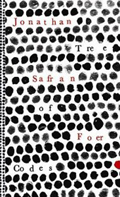

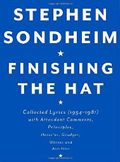
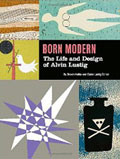

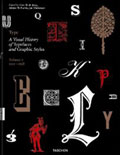
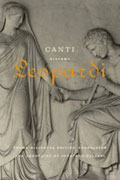
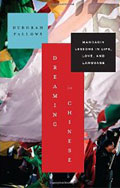
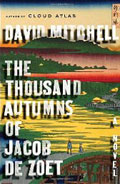
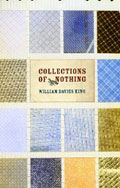
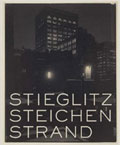
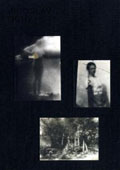
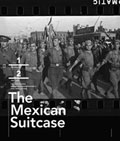

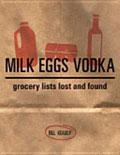


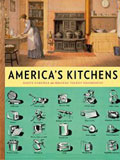
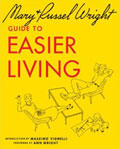

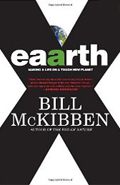
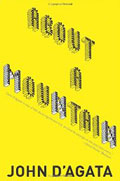

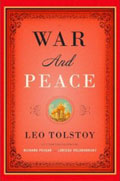

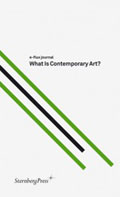
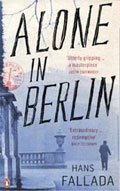

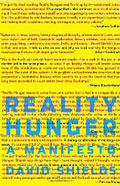

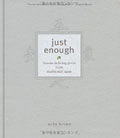
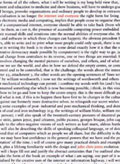

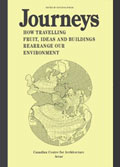
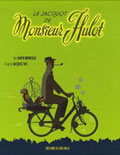
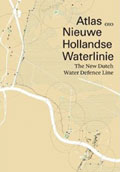

Comments [1]
12.08.10
05:36